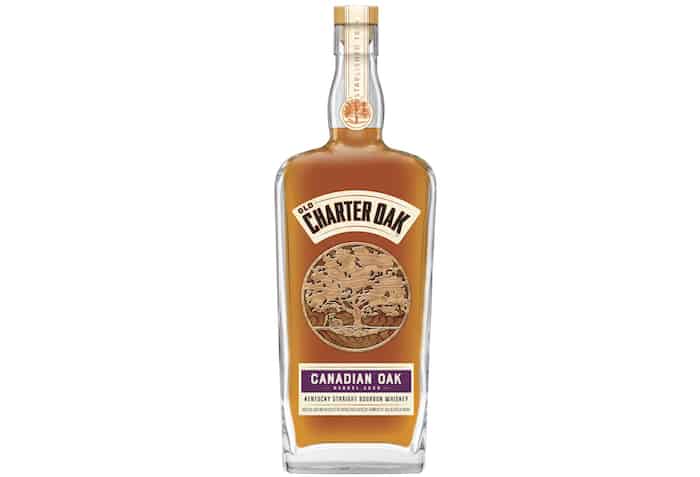The Buffalo Trace Charter Oak bourbon series has been an ongoing exploration by this Kentucky distillery around the role oak plays in making great whiskey. The oak trees used for this brand vary by country of origin, or species, or U.S. state. Some barrels are even made from century oaks, 100, 200, or 300 year old oak trees. Thus far we’ve seen Mongolian and French oak variants, and now the line up has a third addition to the mix making use of Canadian oak.
The new Old Charter Canadian Oak bourbon, according to those behind it, came about as a result of Buffalo Trace some years ago obtaining a small number of barrels from Canada and filling them with its Mash #1, the same mash bill used to make Buffalo Trace, Eagle Rare, and several other bourbons at the distillery. Canadian oak trees are said differ from American oak trees in that they are harder and have a tighter grain structure, which affects the bourbon as it ages.
“The tighter grain allows the whiskey to penetrate more layers in the wood,” said Harlen Wheatley, Buffalo Trace master distiller, in a prepared statement, “but it does take it longer to do it. So the longer the bourbon ages, the more flavor can be extracted.”

This particular bourbon has been aged for a decade before being bottled at 92 proof. It is set to be available later this month at a price point of around $70 per 750 ml bottle. Like the first two releases in this series, supplies will be limited. Packaging for the Canadian Oak will remain consistent with the other two releases, noted Buffalo Trace, with an upscale look consisting of a glass bottle with a cork finish. Each bottle will have an oak medallion on the front depicting the Charter Oak tree.
For those wondering how a Canadian oak barreled whiskey can be called bourbon, it is quite easily answered. By federal standards, bourbon is required to be aged in a new, charred oak container. However, there is no specification it must be American white oak, it’s just that nearly all bourbons made today are aged in white oak.
Official tasting notes for the Canadian Oak, by the way, describe it as having “a nose of caramel and berries. The palate has hints of vanilla and maple syrup. A long finish of oak, chocolate and pepper round it out.”



